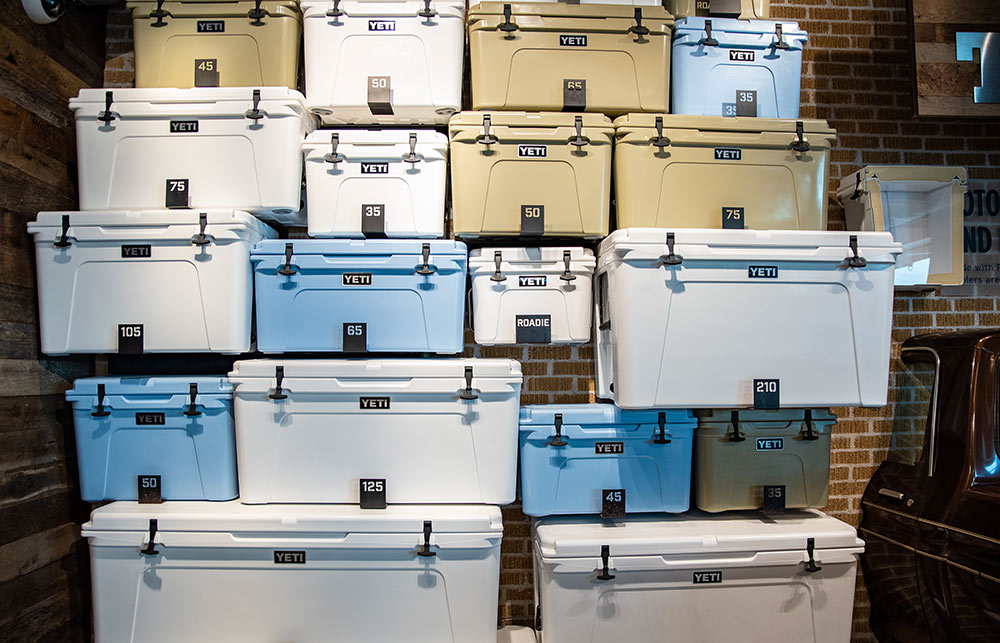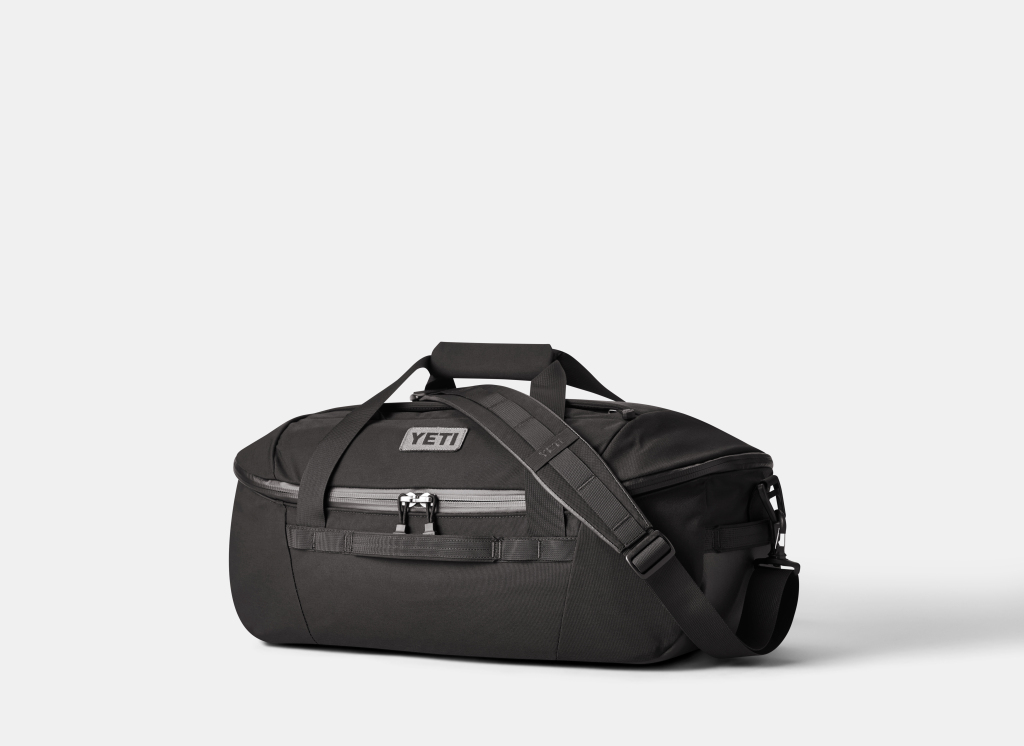
新冠疫情带动了户外活动热潮,许多人愿意花高价从Yeti购买设计精美、品质优良的冷藏保温箱、保温杯等户外装备,因此Yeti最近成功跻身10亿美元品牌俱乐部。
Yeti成立于2006年,公司的创始人是户外运动爱好者。当时,他们对造价低廉的冷藏保温箱非常失望,因为这些产品的把手容易破裂而且插销会脱落,于是他们创立了这家公司。该公司去年的销售额达到10.9亿美元,较2019年增长了19%。
多年来,位于奥斯汀的Yeti一直在不断丰富产品品类,陆续推出了狗床、防水袋、毯子和轻便折椅等产品,同时增加了其招牌冷藏保温箱的不同型号,包括一款售价800美元的不锈钢保温箱。
如今,Yeti正在进行其史上规模最大的新品发布,包括售价最高达到249.99美元的背包和行李袋,以及两款软面行李箱,其中最贵的一款售价高达449.99美元,丰富了种类相对较少的箱包产品。这一切都是为了维持其业务增长的势头。(Yeti不久将推出首款硬面行李箱。)
虽然这两个品类已经有多个型号,但公司的首席执行官马特·雷特杰斯表示,行李袋和行李箱符合消费者对于Yeti的预期,尤其是能够让消费者继续享受到Yeti产品标志性的质量和设计。他认为新产品可以作为现有产品的补充,因为许多客户旅行时会参与大量户外活动。
他告诉《财富》杂志:“你肯定需要把某些东西从一个地方带到另一个地方,肯定会有一些抵达目的地之后会用到的物品。”关于价格,雷特杰斯说:“我们致力于打造高档品牌,消费者支付高价格得到的是结实耐用的质量和优秀的设计。”

毫无疑问,Yeti是新冠疫情期间户外活动繁荣的受益者,而且在旅行受到严重限制之后,无数美国人更是需要替代娱乐活动。例如,美国体育与健身行业协会(Sports & Fitness Industry Association)的最新数据显示,2020年美国至少有过一次远足的人数增加了16.3%,参与过休闲淡水钓鱼的人数增加了16.6%。
2020年,Yeti发现自己错过了许多能够带动销售的活动,比如旅行野餐和烧烤等。但在疫情之前,该公司坚持健康发展,而且很大程度上是因为其拥有如信徒一般高度忠诚的客户。
华尔街公司BTIG在上周发布的一份报告中称,Yeti是“碎片化的户外辅助用品行业的奢侈品牌,其技术领导力、品牌知名度和客户忠诚度无人能及。”
随着公司的更多销售转向自己的网站和门店,Yeti更需要客户的忠诚度。在2020年,Yeti除了跻身十亿美元品牌之列以外,还实现了另外一个里程碑:公司首次有超过一半(53%)收入来自自家门店和网站或直销(DTC)业务。这当中的很大一部分来自其亚马逊(Amazon)商店。不止Yeti有这种转变:从李维斯(Levi’s)到蔻驰(Coach)再到拉尔夫·劳伦(Ralph Lauren),许多品牌都希望增加直销,减少对中间商的依赖,以更好地培养客户忠诚度,并加强对商品展示和配送的控制。
Yeti的主要批发合作伙伴包括迪克体育用品公司(Dick’s Sporting Goods)(2019年占其总销售额的15%)、劳氏公司(Lowe’s)、REI和Bass Pro Shops。2020年,公司业务转型的部分原因是第一季度许多零售店因为新冠疫情预防措施被迫关闭,但雷特杰斯认为即使在疫情结束之后,直销业务仍然将在总销售额中占较高比例。(五年前直销收入仅占总销售的10%。)
雷特杰斯表示:“我们在创建这个基于热情的户外品牌时就已经知道,消费者希望直接与我们互动,他们不仅被我们的商品吸引,也被我们讲述的品牌故事所打动。” Yeti通过新颖的营销手段,例如生活方式产品目录和利昂·布里奇斯等艺人的Spotify歌单等,已经使其产品变成了一种文化现象,不再局限于简单的冷藏保温箱或饮料架。
要想突破销售额20亿美元大关(到目前为止,Yeti表示其预计今年销售额的涨幅只有15%至17%),仅靠行李箱和新式背包远远不够。事实上,雷特杰斯认为国内外都有巨大的市场有待开发。他认为Yeti可以通过增加更多新元素,进一步丰富现有产品。例如,公司最近推出了更大容量的单人饮料架,并为现有产品推出了更多种颜色,以供消费者选择。
雷特杰斯说:“我们每一年的销售增长,大部分都来自老牌产品。事实上,我们的产品经久耐用,而且我们会继续讲述这些产品的故事。”(财富中文网)
译者:刘进龙
审校:汪皓
新冠疫情带动了户外活动热潮,许多人愿意花高价从Yeti购买设计精美、品质优良的冷藏保温箱、保温杯等户外装备,因此Yeti最近成功跻身10亿美元品牌俱乐部。
Yeti成立于2006年,公司的创始人是户外运动爱好者。当时,他们对造价低廉的冷藏保温箱非常失望,因为这些产品的把手容易破裂而且插销会脱落,于是他们创立了这家公司。该公司去年的销售额达到10.9亿美元,较2019年增长了19%。
多年来,位于奥斯汀的Yeti一直在不断丰富产品品类,陆续推出了狗床、防水袋、毯子和轻便折椅等产品,同时增加了其招牌冷藏保温箱的不同型号,包括一款售价800美元的不锈钢保温箱。
如今,Yeti正在进行其史上规模最大的新品发布,包括售价最高达到249.99美元的背包和行李袋,以及两款软面行李箱,其中最贵的一款售价高达449.99美元,丰富了种类相对较少的箱包产品。这一切都是为了维持其业务增长的势头。(Yeti不久将推出首款硬面行李箱。)
虽然这两个品类已经有多个型号,但公司的首席执行官马特·雷特杰斯表示,行李袋和行李箱符合消费者对于Yeti的预期,尤其是能够让消费者继续享受到Yeti产品标志性的质量和设计。他认为新产品可以作为现有产品的补充,因为许多客户旅行时会参与大量户外活动。
他告诉《财富》杂志:“你肯定需要把某些东西从一个地方带到另一个地方,肯定会有一些抵达目的地之后会用到的物品。”关于价格,雷特杰斯说:“我们致力于打造高档品牌,消费者支付高价格得到的是结实耐用的质量和优秀的设计。”
毫无疑问,Yeti是新冠疫情期间户外活动繁荣的受益者,而且在旅行受到严重限制之后,无数美国人更是需要替代娱乐活动。例如,美国体育与健身行业协会(Sports & Fitness Industry Association)的最新数据显示,2020年美国至少有过一次远足的人数增加了16.3%,参与过休闲淡水钓鱼的人数增加了16.6%。
2020年,Yeti发现自己错过了许多能够带动销售的活动,比如旅行野餐和烧烤等。但在疫情之前,该公司坚持健康发展,而且很大程度上是因为其拥有如信徒一般高度忠诚的客户。
华尔街公司BTIG在上周发布的一份报告中称,Yeti是“碎片化的户外辅助用品行业的奢侈品牌,其技术领导力、品牌知名度和客户忠诚度无人能及。”
随着公司的更多销售转向自己的网站和门店,Yeti更需要客户的忠诚度。在2020年,Yeti除了跻身十亿美元品牌之列以外,还实现了另外一个里程碑:公司首次有超过一半(53%)收入来自自家门店和网站或直销(DTC)业务。这当中的很大一部分来自其亚马逊(Amazon)商店。不止Yeti有这种转变:从李维斯(Levi’s)到蔻驰(Coach)再到拉尔夫·劳伦(Ralph Lauren),许多品牌都希望增加直销,减少对中间商的依赖,以更好地培养客户忠诚度,并加强对商品展示和配送的控制。
Yeti的主要批发合作伙伴包括迪克体育用品公司(Dick’s Sporting Goods)(2019年占其总销售额的15%)、劳氏公司(Lowe’s)、REI和Bass Pro Shops。2020年,公司业务转型的部分原因是第一季度许多零售店因为新冠疫情预防措施被迫关闭,但雷特杰斯认为即使在疫情结束之后,直销业务仍然将在总销售额中占较高比例。(五年前直销收入仅占总销售的10%。)
雷特杰斯表示:“我们在创建这个基于热情的户外品牌时就已经知道,消费者希望直接与我们互动,他们不仅被我们的商品吸引,也被我们讲述的品牌故事所打动。” Yeti通过新颖的营销手段,例如生活方式产品目录和利昂·布里奇斯等艺人的Spotify歌单等,已经使其产品变成了一种文化现象,不再局限于简单的冷藏保温箱或饮料架。
要想突破销售额20亿美元大关(到目前为止,Yeti表示其预计今年销售额的涨幅只有15%至17%),仅靠行李箱和新式背包远远不够。事实上,雷特杰斯认为国内外都有巨大的市场有待开发。他认为Yeti可以通过增加更多新元素,进一步丰富现有产品。例如,公司最近推出了更大容量的单人饮料架,并为现有产品推出了更多种颜色,以供消费者选择。
雷特杰斯说:“我们每一年的销售增长,大部分都来自老牌产品。事实上,我们的产品经久耐用,而且我们会继续讲述这些产品的故事。”(财富中文网)
译者:刘进龙
审校:汪皓
Yeti recently joined the billion dollar–brand club as the pandemic fueled a surge in outdoor activities by many people willing to pay premium prices for its sleek, high-quality coolers, insulated mugs, and other accoutrements.
The company, founded in 2006 by outdoorsmen frustrated with cheaply made coolers with handles that broke easily and latches that snapped off, hit $1.09 billion in sales last year, a 19% jump from 2019’s level.
Over the years, Austin-based Yeti has expanded its assortment to include things like dog beds, waterproof bags, blankets, and camping chairs, while deepening the roster of its signature coolers, including a stainless-steel one that costs $800.
Now Yeti is undertaking its biggest new product launch yet, a line consisting of backpacks and duffel bags going for up to $249.99, and two soft-sided luggage pieces, the most expensive of which has a price tag of $449.99, adding to a modest assortment of bags, all with a view to keeping its hot streak going. (The company’s first-ever hard-sided luggage piece will come later.)
While there are plenty of incumbents in both categories, CEO Matt Reintjes says the bags and luggage fit in with what Yeti customers want from the brand, especially if they maintain Yeti’s signature quality and design. He sees the range complementing its existing offerings since many customers travel to places where they will engage in the great outdoors.
“There are certain things you need to get from here to there, and there are things you use once you’re there,” he tells Fortune. As for the prices, Reintjes says, “we’re going to be a premium player, and what you get for the premium is durability and design.”
Yeti was no doubt the beneficiary of the COVID-19 boom in outdoor activities, all the more since countless Americans needed alternative pastimes with travel severely curbed. For instance, the number of Americans who went hiking at least once in 2020 rose 16.3%, and casual freshwater fishing by 16.6%, according to new data from the Sports & Fitness Industry Association.
In 2020, Yeti found itself deprived of many of the activities that fuel sales, like tailgating and barbecues. But the company had been growing healthily well before the pandemic, and has continued to do so in no small part because of the intense, almost cultlike loyalty of its customers.
Wall Street firm BTIG said in a report last week that Yeti is “a luxury brand in the fragmented outdoor accessory equipment category that is unrivaled in its technological leadership, brand perception, and customer loyalty.”
The company will need that loyalty as a bigger chunk of its sales shift to its own website and stores. In addition to the $1 billion threshold, Yeti hit another milestone in 2020: More than half its revenue, 53%, came from its own stores and website, or direct-to-consumer (DTC), for the first time. (A big chunk of that comes from its Amazon Marketplace store.) On this front, Yeti is not alone: Brands from Levi’s to Coach to Ralph Lauren want to sell more directly to customers and rely less on middlemen to better cultivate shopper loyalty and have more control over presentation and distribution.
Yeti’s big wholesale partners include Dick’s Sporting Goods (15% of total sales in 2019), Lowe’s, REI, and Bass Pro Shops. While some of the shift in 2020 stemmed from many retail stores closing in the first quarter because of COVID-19 precautions, Reintjes sees DTC as a percentage of total sales staying high even after the pandemic recedes. (It was only 10% of sales five years ago.)
“We knew that as we built this passion-based outdoor, active brand, that consumers wanted to engage directly with us, not just for our product but for our storytelling too,” says Reintjes. Yeti’s products have developed a cultural presence that goes beyond simple coolers or drink holders, with novel marketing such as a lifestyle catalog and Spotify playlists from artists like Leon Bridges.
To one day reach the $2 billion level (Yeti has so far said it expects sales to be up only 15% to 17% this year), luggage and new backpacks won’t be enough. In fact, Reintjes sees a big untapped market not only abroad but stateside too. And he thinks Yeti can get even more mileage from its current product roster by adding some twists. That has lately included things like larger capacity single person drink holders to offering its products in more colors.
“The majority of our growth in any given year comes from legacy products,” says Reintjes. “The reality is that our products last a long time, and we continue to tell those products’ stories.”






